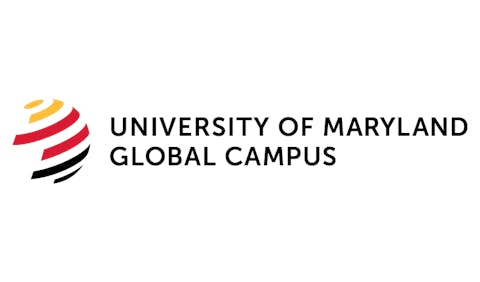Hit hard by the global financial crisis, colleges are cutting their budgets in ways that prompt fears about access and retention for minority students.
Call it the perfect storm for university funding. Just as economic downturns are squeezing state revenues for education, a financial meltdown on Wall Street is moving ahead with unprecedented size and speed. In mere weeks, college endowments have lost much of their value, interest on loans of all types has spiked and credit is much harder to acquire.
Already schools from Howard University to Harvard University are calling for emergency spending cuts. Schools are considering layoffs, unpaid furloughs for faculty and staff, hiring freezes and elimination of courses. Some are trying to generate resources — Clemson even asked its football team to kick in some of its earnings to help out. Financial aid is in for a big hit, which might make it impossible for many students to continue their education.
Minority-serving institutions, including historically Black schools that have long struggled financially, can expect to be especially hard hit. “I think there is a lag between this meltdown and the real outcome that will be produced,” says Dr. Michael L. Lomax, president of the United Negro College Fund (UNCF). “This is moving at warp speed, and we will see this play out much more forcefully in the spring semester.”
The Fallout
The crisis is being played out on several levels. State schools are facing draconian budget cuts, and private institutions are seeing donations dry up from graduates who are dealing with layoffs and foreclosures.
Many states including California, South Carolina and Virginia, among others, are caught in budget slumps. California faces an $11.2 billion state budget shortfall, so the California State University system may have to cut its 450,000 enrollment by 10,000 for the 2009-10 academic year, possibly turning away qualified students.
In Virginia, Gordon Hickey, a press spokesman for Gov. Tim Kaine, says the state is facing a $2.5 billion shortfall. “There will be an impact on higher education,” he says. “But we don’t want to increase tuition or hurt aid, so that leaves administration.”
In South Carolina, a combination of lower state tax revenues prompted by an economic downturn and laws forbidding deficit spending slapped Clemson University with a $26 million budget shortfall. Faculty and staff will take a mandatory, five-day furlough without pay, a hiring freeze is in effect, unfilled faculty positions were cancelled permanently, and construction was delayed for an innovation center, a life sciences center and an Academic Success Center.
And school entities outside the usual budget, such as athletics, housing and food, all have to pony up $3 million total, some of it from Clemson’s Atlantic Coast Conference football team. “We have to find new ways to generate revenues,” says Cathy Sams, chief public affairs officer.
Schools are also being slammed on endowments. Because of the meltdown in subprime lending, stock markets are down a stunning 40 percent in the past year. Endowments, particularly at wealthy Ivy League institutions, are taking huge hits. Moody’s Investors Service, a bond ratings agency, has projected that university endowments will decline 30 percent this year.
Spelman College in Atlanta is freezing hiring and delaying renovation projects. President Beverly Daniel Tatum is calling for a boost in private philanthropy to replace private lending since the school’s investments have been hurt by stock market downturns.
Other negative fallout will be the extra attention on the compensation paid to some college executives. The pay given to college presidents, some of whom make in excess of $800,000 a year, is under scrutiny. Also, according to The Chronicle of Higher Education, as many as five college endowments are considering suing their brokers or investment managers because they have not been able to access money in their accounts, which have diminished in value.
For MSIs: A Silver Lining?
Ironically, historically Black schools, while facing other severe fiscal challenges, are being spared some of the current endowment strife. Many manage their finances conservatively and have tended not to get involved in derivatives, hedge funds and other complex and risky financial instruments when balancing their endowment investments. Consequently, they are not facing the same level of decrease experienced by some of the large, well-heeled universities, such as Duke, Harvard and Yale universities.
Howard University, which just concluded a successful fundraising campaign that exceeded expectations, is battening down its hatches, says Sidney Evans, chief financial officer. “Our endowment peaked at $550 million in September 2007,” he says. As of Nov. 7, it had fallen to $426 million. “That’s about 20 percent in a little over 14 months,” he says.
Top Howard officials hold regular meetings to watch both the stock market and their budget. In some ways,
Howard is in a good position, Evans says. Howard has limited its exposure in private equity to about 15 percent of the total. Before the financial crisis, hedge funds, based on risky and complex derivatives, had been popular investment tools because they had high returns. Today, however, about onethird of the 10,000 hedge funds in the country may go out of business.
“They are taking a tremendous beating,” says Evans, who notes that some schools had taken positions of 30 to 40 percent in them while Howard’s position was much smaller. Cost-cutting at Howard is inevitable, Evans says, noting “there will be an impact on financial aid, but we don’t want to compromise our delivery of educational services.”
Still, “all endowments are taking hits, no matter how they have been hedged. There’s no place to hide,” says Edward J. Stavetski, director of investment oversight at the Wilmington Family Office, a Wilmington, Del., firm that helps wealthy families invest.
One of the most painful circumstances for some colleges with hedge fund exposure is that they may need to come up with hundreds of thousands of dollars in additional cash to make the capital calls those funds require. Capital calls are when investors are required to top up a deficit in an investment fund with cash. Stavetski believes it will be three to five years before the endowments regain lost ground.
For many minority-serving institutions, however, the size of their endowments has been small comfort during these worsening economic times, according to Vivian Sanchez, chief financial officer and senior vice president for administration at Florida International University in Miami-Dade County.
Some are too young to have yet established a hefty endowment to help them weather a budget crisis, she says. Sanchez notes that even the older alumni of FIU, which opened its doors 36 years ago, are still far from a retirement age when alumni begin thinking about bequeathing part of their estates to their alma mater.
“So when I look at some of my sister institutions here or around the nation, when you get a budget cut, you can go to your foundation and help bridge the budget cuts. For an institution like ours,” says Sanchez, “you don’t have that cushion of protection. It’s almost a double hit for you. When the stock market has absorbed losses, the little endowment you have has gone down, which is why we have no choice but to take these budget cuts seriously.”
Dire Predictions
One impact that especially worries Lomax of the UNCF is how it will affect financial aid to Black students. “At most historically Black schools, 70 to 80 percent of students are low income and Pell (Grant) eligible. They have to take on extra jobs just to close the financial aid gap, and now it’s just going to be harder to do that. I think we’re going to start seeing retention slip in the spring semester.”
Colleges and students alike will find it much harder to get credit. Students will have to find co-signers for loans or show assets such as home equity lines of credit. “All of this says that African- American students will be disproportionately hard hit,” Lomax says.
After starting the school year with a round of permanent and one-time budget cuts totaling $25 million, California State University, Fullerton, a Hispanic-serving institution, faces additional cuts expected to take $7 million more from this school year’s budget, says Christopher Bugbee, director of media relations. Dr. Milton A. Gordon, president of Cal State-Fullerton, expects that they’ll have to turn away eligible students next year, for the first time in the system’s history.
“That to me is a very sad note, because I’ve been trying to encourage people to come to college,” Gordon tells Diverse. He adds that the freshman class is 37 percent Hispanic, “so if we’re going to be turning away eligible college students, a lot of them are going to be Hispanic.”
FIU, the top producer of baccalaureate degrees awarded to Hispanics, is eliminating 20 degree programs — many of them in teacher education — while allowing the students currently in those programs to graduate. The university is also closing centers and expects to lay off 200 people and increase tuition next year by 15 percent for many students.
“What hurts most is having to eliminate programs for students. It is very disappointing where you have very qualified students in programs and you’re telling them, the program’s going to be closed,” says Sanchez. “And, you’ve told tenured faculty that you can no longer afford to keep that program at the institution. It hurts for the students. It hurts for the faculty. And for the staff that have helped build this institution, to say to them, ‘I can’t afford to have you around.’”
Regarding state funding, as long as layoffs continue, homes remain unbuilt and foreclosures continue, revenue streams will remain dry. The ultimate question is how long the turmoil will last. Evans of Howard predicts stock market volatility has a way to go. “If this were a baseball game, I’d say we were in the fifth or sixth inning.” Diverse senior editor Karen Branch-Brioso contributed to this report.
COPING WITH THE ECONOMY
The faltering economy is forcing colleges and universities to take dramatic actions:
• Arizona State University terminated the contracts of up to 200 adjunct professors.
• James A. Drake, the president of Brevard Community College in Florida, will use his $100,000 pay raise to establish a fund to help students pay for books.
• Clemson University president, James Baker, has asked its athletics, housing and other auxiliary programs to contribute millions from their revenue to the school.
• Unable to pay the rent on its Bristol campus facility, East Tennessee State University will next semester close that campus, which currently enrolls 222 students.
• Although raising tuition during an economic downturn is politically unpopular, Florida Gov. Charlie Crist has proposed that all of Florida’s public universities be allowed to charge a premium that could cost students hundreds of dollars a year.
• Among numerous cuts, Florida International University is closing six centers, including the Intercultural Institute for Educational Initiatives, and requiring some others to find their own funding to become self-sustaining.
• Several college presidents are giving back some of their pay, including Washington State University president Dr. Elson S. Floyd who requested a 14 percent salary reduction.
© Copyright 2005 by DiverseEducation.com



















